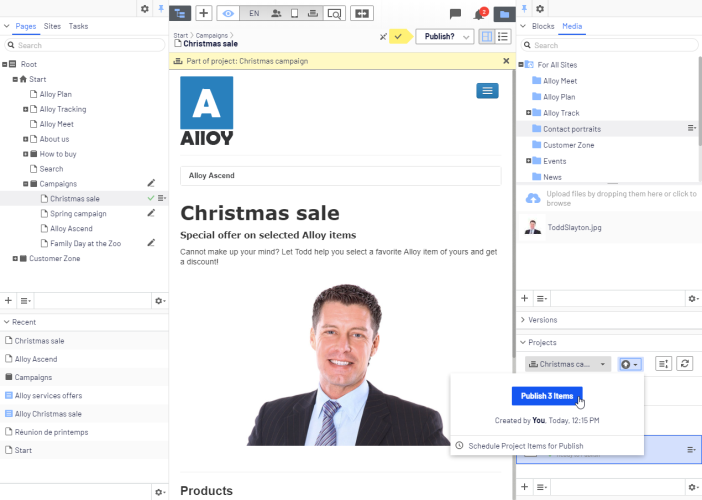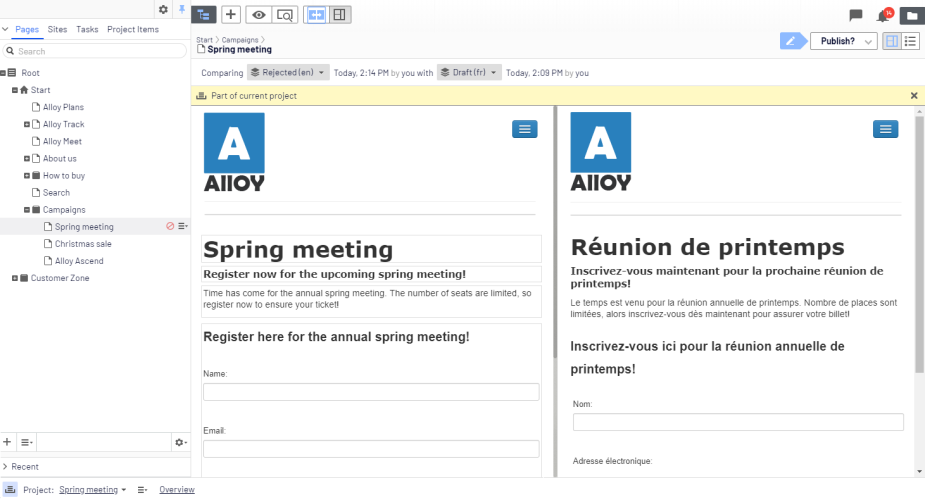 The projects gadget
The projects gadget
A project lets you manage the publishing process for multiple related content items, such as a landing page, blocks and products (if you have Optimizely Commerce installed) that are parts of a campaign. Projects support content management in different language versions, so that you can manage translation of content items in the project view.
You can create new content or create draft versions of existing content, associate the content items with a project, and then publish the project immediately or schedule it for later publishing.
You need to add the projects gadget to the left or right pane to access the project features.
Working with projects
Creating a project and adding content
Create a project from the gadget menu and add desired content items through drag and drop. You can prepare the draft versions of the content items first, and then create the project and add them, or the other way around. Use Sort in the context menu to sort content items for a better overview, and Refresh to reload the view if multiple editors are working on the same project. Use the Sort button  to sort content items for a better overview, and the Refresh button
to sort content items for a better overview, and the Refresh button  to reload the view if multiple editors are working on the same project.
to reload the view if multiple editors are working on the same project.
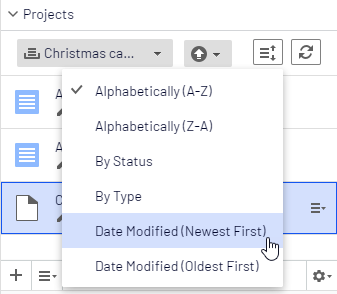
A specific content version can only be part of one project. If you try to add the same version to another project, you are prompted to create a new draft.
Previewing project content
The preview option in the top menu has an option for projects where you can browse through included items, preview them as if they were published, and update them if needed.
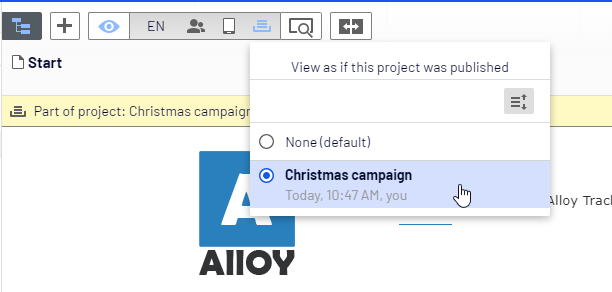
Publishing projects
To publish a project, all included items must first be set to status Ready to Publish. You can do this for each item from the publishing menu when editing, or from the context menu in the Project gadget.
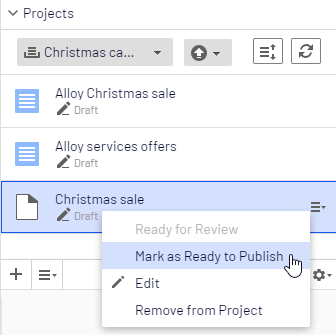
When all items are ready for publishing, you can publish the entire project directly, or schedule the project to be published later (if you have publishing access rights). If you need to change content in a scheduled project, select Remove Scheduling and Edit, change the content and re-schedule the project publishing. Published projects cannot be edited.
Removing content and deleting projects
Remove a content item from a project by selecting the item in the projects gadget and then selecting Remove from Project from the item's context menu. Removing a content item from a project means that it is no longer associated with the project but it is not deleted from the website.
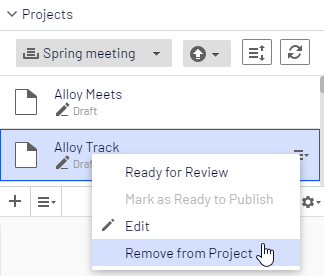
Delete a project by selecting the project in the projects gadget and then selecting Delete Project from the gadget's context menu. Projects are permanently deleted, but associated content items remain. When deleting a project scheduled for publishing, you have the option to keep or remove the scheduling for each associated item.
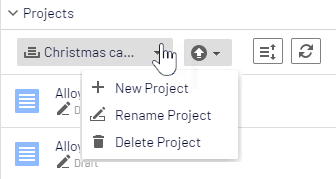
This example creates a fashion sales campaign with multiple content items on a website with Optimizely CMS and Optimizely Commerce. The campaign will go live on a specified date, and contain a landing page with a product listing block, two new products to be listed in the block, and a teaser block for the start page. You create the project first, and then add the content items.
- In the Optimizely Commerce catalog tree, create a project for the campaign and name it Spring Collection.
- Prepare draft versions of the catalog items in Optimizely Commerce, create and edit the catalog entries and add product descriptions and assets as desired.
- When done, drag the prepared catalog entries from the Catalog gadget to the Project gadget where you set the products to Ready to Publish before they are added to the project, but you can do this later.
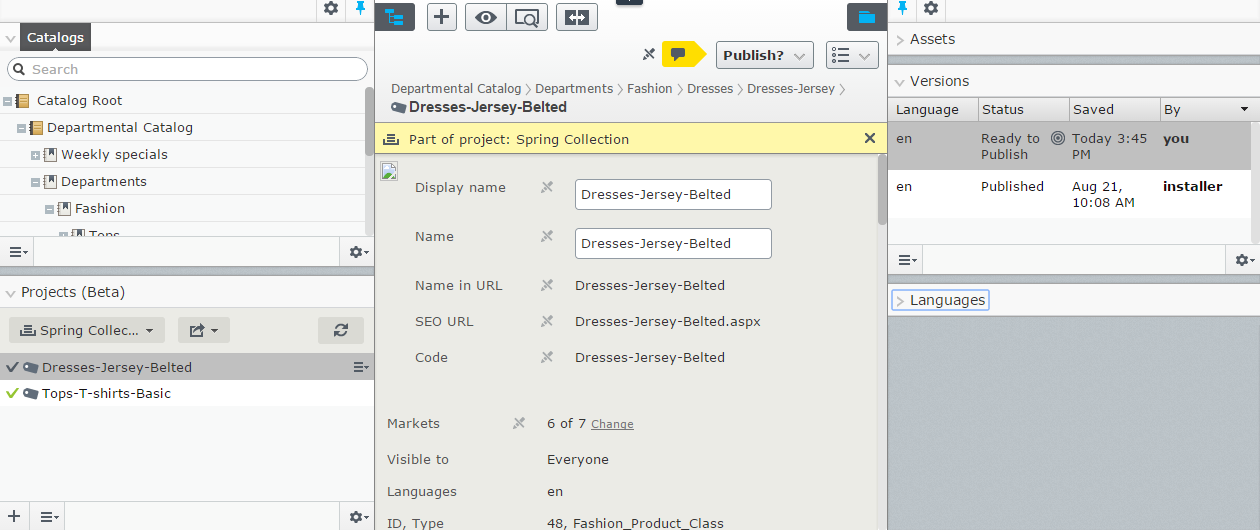
- Switch to the CMS edit view and create the landing page for the Spring Collection. Add text and assets as needed, and drag the landing page to the Spring Collection project.
- Create a block listing the products included in the spring collection, and include it in the landing page. Add the product listing block to the project.
- Create a teaser block to be used on the landing page for promoting the new spring collection, and add the teaser block to the project.
- Drag the teaser block to the start page, and add the start page to the project. The Spring Collection project now contains all the items to be included in the campaign.
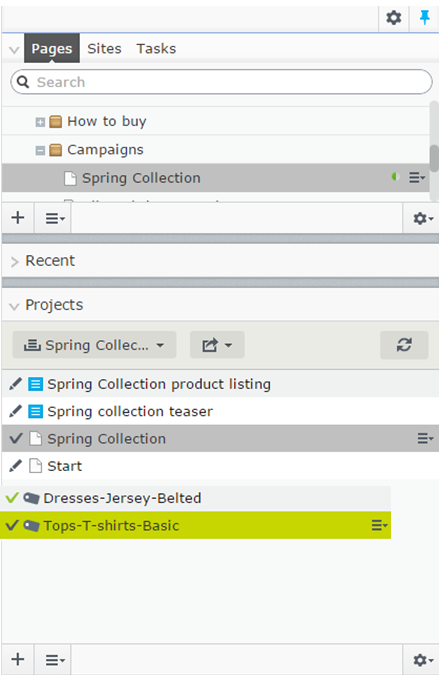
- Preview the content items in the project, edit as needed and set to Ready to Publish when done.
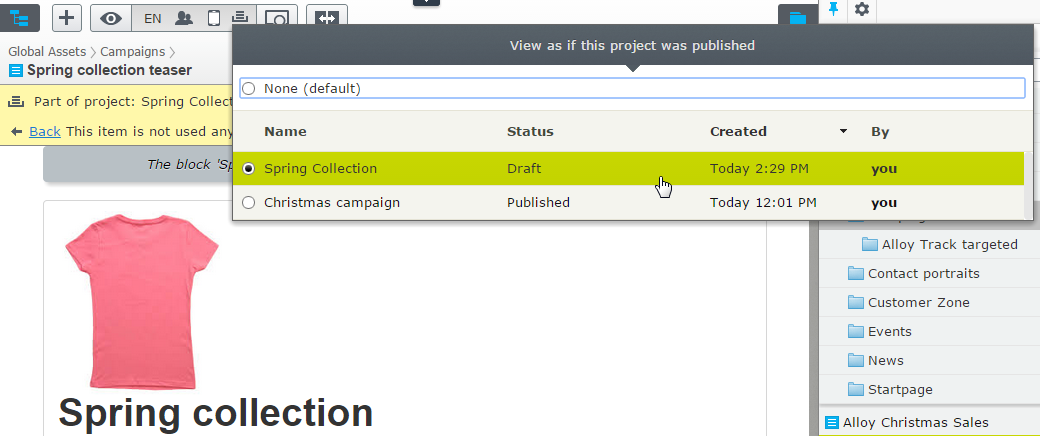
- Schedule the project to be published on the defined go-live date for the campaign.
You cannot edit versions of content items that are part of a scheduled project. For example, if you need to update the start page before the scheduled project is published, you need to create a new draft and then publish this. If you need to incorporate the same changes into the scheduled project version of the start page, remove the scheduling to edit.
This example creates a page with a registration form block for an event. The included items need to be available in English (the original website language), French and German, and you manage the translation using a project.
- Create the page and the related forms block in English first.
- Create a project and name it Spring Meeting.
- Add the English versions of the page and the forms block to the project.
- Enable and activate the desired languages (here French and German) on your website, if not already done. (Must be done by an administrator.)
- Switch to the French language branch and create a French version for the page and the forms block.
- Drag the French version of the content items into the Spring Meeting project.
- Repeat the previous actions for the German language version. You now have six content items in the project; two for each language version.
- Translate the content items into French and German respectively.
- Set all the content items to Ready to Publish when done, and publish the project or schedule it for later publishing.
